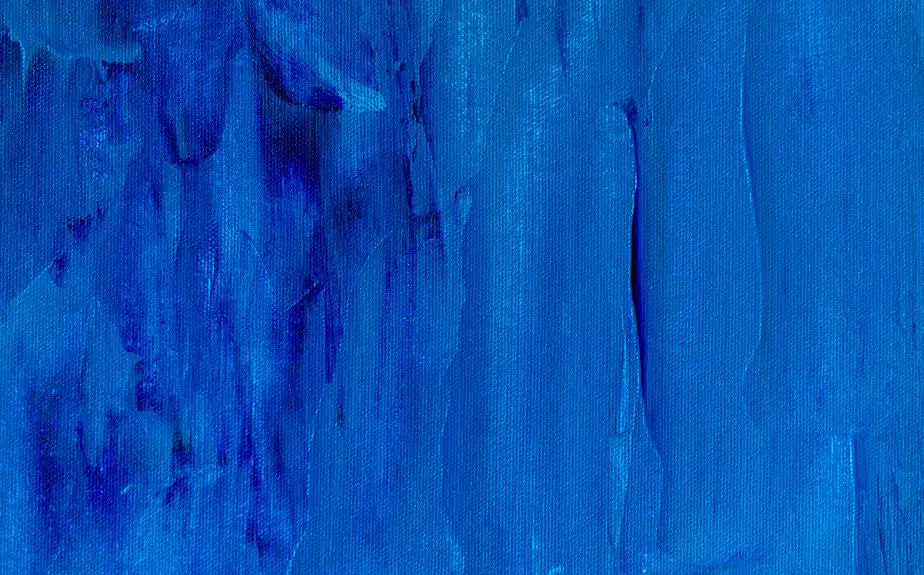When you make a mistake in fabric painting, it's crucial to first identify what went wrong. Whether it's a wet spill or dried paint, knowing the type of error can guide your next steps. You might find that a quick dab with a damp cloth does the trick, but if the paint's already set, you'll need a different approach. There are various techniques for correcting mishaps, and sometimes creativity can turn a blunder into a feature. So, how do you decide the best method for your situation? Let's explore your options further.
Table of Contents
Key Takeaways
- Assess the mistake by determining if the paint is wet or dried, and identify the fabric type for appropriate repair methods.
- Use soap and water for fresh paint stains; for dried paint, consider fabric-safe solvents or rubbing alcohol to lift the color.
- Employ patches or appliqués to creatively cover mistakes, ensuring they complement the original design and are securely attached.
- Enhance the design with stencils, stamps, or freehand painting to distract from errors and add visual interest.
Identify the Type of Mistake
Before you can fix a mistake in fabric painting, you need to identify what type of error you've made. Is it an unintentional spill, a smudge, or maybe an incorrect color application? Each mistake has its own solution, so pinpointing the issue is crucial. Take a moment to assess your work.
If you've accidentally spilled paint, determine if it's still wet or dried. Wet paint can often be blotted up, while dried paint may require a more thorough approach.
For smudges, check the fabric type; some fabrics absorb paint differently, which can affect your repair method.
Next, consider color errors. Did you mix the wrong shades or apply too much paint? If you used the wrong color, you might need to paint over it entirely or blend in the correct hue.
Lastly, if the design lacks precision or clarity, you may need to refine the edges or add details to enhance the overall appearance.
Gather Necessary Supplies
What supplies do you need to effectively repair mistakes in your fabric painting?
First, you'll want a high-quality fabric paint remover. This is crucial for safely lifting unwanted paint without damaging the fabric.
Next, gather some clean, soft cloths or sponges. These will help you apply the remover and gently dab at the mistakes.
You'll also need a small brush or toothbrush for detailed areas. This will help you work the remover into the fabric fibers.
Don't forget a bowl of warm, soapy water for rinsing your brush and cloths as you work.
Additionally, have some paper towels on hand to absorb excess moisture and paint.
If the mistake is significant, consider having matching fabric paint ready to touch up the area once it's clean.
Lastly, a pair of gloves is essential to protect your hands from chemicals in the paint remover.
With these supplies gathered, you'll be well-prepared to tackle any mistakes in your fabric painting project. Having everything on hand will make the repair process smoother and more efficient, ensuring your fabric art looks its best again.
Techniques for Removing Paint
With your supplies ready, you can start using effective techniques to remove unwanted paint from your fabric. First, consider using soap and water for fresh paint stains. Gently blot the area with a damp cloth, and then apply a mixture of mild soap and water to lift the paint. If the paint is dried, you might need to use a fabric-safe solvent. Test the solvent on a hidden area to ensure it won't damage your fabric.
Another option is rubbing alcohol. Soak a cotton ball or cloth with alcohol and dab it on the paint. Keep blotting until the paint starts to lift. If the paint persists, you can try using a commercial fabric paint remover, following the instructions carefully.
Here's a quick reference table to help you choose the right method:
| Paint Type | Best Removal Method |
|---|---|
| Fresh Paint | Soap and water |
| Dried Paint | Fabric-safe solvent |
| Acrylic Paint | Rubbing alcohol |
| Permanent Marker | Commercial fabric remover |
Covering Mistakes With Fabric
You can easily cover mistakes in fabric painting by using patches or appliqués to create a unique design element. This approach not only hides the error but also adds character to your piece.
First, choose fabric that complements your original design. Bright colors or contrasting patterns can create a bold statement, while subtle tones might blend seamlessly.
To attach your patch or appliqué, you can either sew it on or use fabric glue. If you opt for sewing, make sure to secure the edges with a tight stitch to prevent fraying. Fabric glue is quicker, but you'll need to allow ample drying time to ensure a strong bond.
Consider layering patches for a more dynamic effect. You can stack smaller patches or appliqués over a larger one, creating depth and interest. Don't shy away from experimenting—mix textures and shapes to personalize your fabric.
Lastly, if you're feeling adventurous, try adding embellishments like beads or sequins to your patches. This extra detail can elevate the design and distract from the mistake. With a little creativity, your mishap can transform into a standout feature.
Enhancing With Additional Designs
Building on the creativity of patches and appliqués, enhancing your fabric piece with additional designs can further elevate its appeal and uniqueness. You can easily integrate stencils, stamps, or even freehand painting to add layers of detail and interest. Think about colors that complement or contrast with your existing design for a striking effect.
Consider incorporating motifs like florals, geometric shapes, or abstract patterns. These can draw the eye and create a cohesive look. If you're unsure about how to proceed, sketch your ideas on paper first. This will help you visualize the final outcome and avoid overwhelming your piece.
Don't hesitate to mix textures as well. Adding embroidered elements or beaded accents can give your fabric an extra dimension. Just remember to keep balance in mind; too much can detract from the original design.
Preventing Future Errors
To prevent future errors in fabric painting, it's essential to plan your design carefully before starting the application process. This preparation helps you envision the outcome and reduces the risk of mistakes.
Here are three key steps to follow:
- Sketch Your Design: Before applying any paint, create a detailed sketch of your design on paper. This gives you a clear guide and helps you visualize how it will look on the fabric.
- Choose the Right Materials: Select high-quality fabric paints and tools suited for your project. Using the right brushes and paints can significantly impact the final result and reduce errors.
- Test on Scrap Fabric: Always test your colors and techniques on a piece of scrap fabric that's similar to your main project. This allows you to see how the paint interacts with the fabric and adjust your approach if necessary.
Frequently Asked Questions
Can I Use Regular Paint Thinner for Fabric Paint Mistakes?
You can't use regular paint thinner for fabric paint mistakes. It might damage the fabric or alter its texture. Instead, look for fabric-specific solvents or techniques that safely address your painting errors without harming the material.
How Do I Fix a Mistake on a Delicate Fabric?
To fix a mistake on delicate fabric, gently blot the area with a damp cloth. If needed, use a fabric-safe solvent or cleaner. Always test in an inconspicuous spot before applying any solution directly.
Is It Safe to Wash the Fabric After Repairing?
Yes, it's generally safe to wash the fabric after you've made repairs. Just ensure the repairs are completely dry and set. Use a gentle cycle and cold water to preserve the fabric's integrity.
What Types of Fabric Are Easiest to Repair?
When considering fabric types, cotton and polyester blends are easiest to repair. They're durable, hold paint well, and respond nicely to heat, making corrections simpler. You'll find working with them quite manageable and effective.
Are There Specific Tools for Fabric Painting Mistakes?
Yes, there're specific tools for addressing fabric painting mistakes. You'll want fabric paint removers, cotton swabs, brushes, and a palette knife. These help correct errors effectively, ensuring your projects turn out just how you envisioned.
- Tetron Fabric for Marine Applications: Durability and Use Cases - June 18, 2025
- Tetron Fabric for Outdoor Furniture: Weather Resistance and Care - June 18, 2025
- Tetron Fabric for Wall Coverings: Style and Application Tips - June 18, 2025





